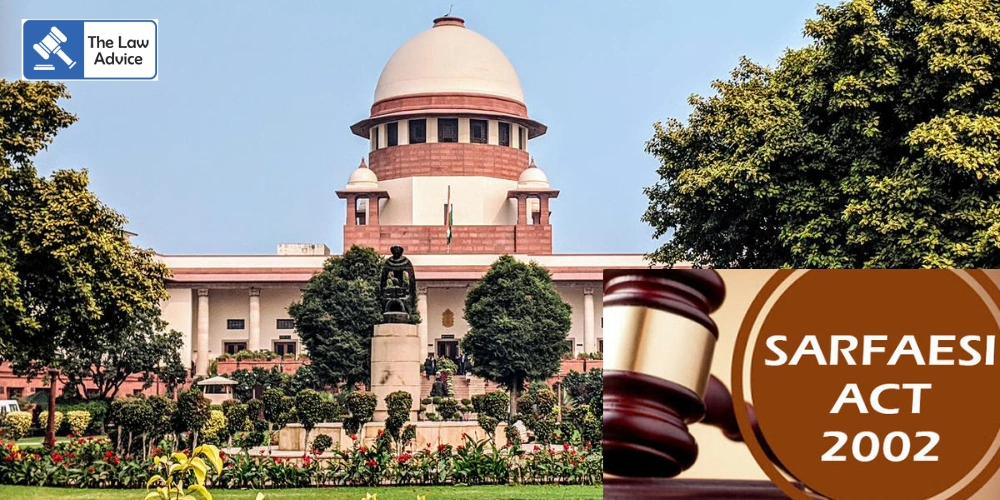The Supreme Court has delivered an important clarification on the interpretation of Section 13(8) of the SARFAESI Act, 2002, holding that the “publication of notice” which ends a borrower’s right of redemption of mortgage is not confined to newspaper publication alone. Instead, it encompasses all forms of notice mandated under the Security Interest (Enforcement) Rules, 2002 depending on the chosen mode of sale by the secured creditor.
A Bench comprising Justice JB Pardiwala and Justice R. Mahadevan made it clear that the borrower’s statutory right of redemption continues until the secured creditor issues a valid notice of sale in the manner prescribed by the rules. Once such notice is duly issued and the 30-day period under Rule 9(1) expires, the right of redemption stands extinguished.
Publication Not Limited To Newspapers
The Court stressed that the word “publication” in Section 13(8) must be interpreted broadly to include:
• Service of notice to the borrower under Rule 8(6),
• Publication in newspapers where the mode of sale is by public auction or tender,
• Affixation of notice on the property under Rule 8(7), and
• Uploading of notice on the relevant platform where required.
Thus, “publication of notice” is not a singular act but a composite process that varies depending on whether the secured creditor opts for a public auction, tender, inviting quotations, or private treaty.
When Does Redemption Right End?
The Court clarified that the borrower may exercise the right of redemption up until the date of publication of the valid notice of sale. For instance:
• In public auction or tender, the right ends when the notice is published in newspapers as mandated by Rule 8(6) proviso.
• In private treaty or by quotations, where no newspaper publication is required, the right ends when the secured creditor serves or affixes the notice of sale in compliance with the applicable rules.
The judges emphasized that the 30-day period under Rule 9(1) must be counted from the later of the dates when the notice is served, affixed, or published. Until this condition is fulfilled, the notice of sale is incomplete and the borrower’s redemption right continues.
Justice Pardiwala, writing the judgment, observed:
“The term ‘notice of sale’ is an umbrella expression. It refers to and includes every form of notice the secured creditor is required to give under the SARFAESI Rules. These are not distinct notices, but part of one single composite notice. It is only when all such requirements are satisfied, and thirty days have lapsed thereafter, that the notice of sale can be treated as valid in law and the borrower’s redemption right comes to an end.”
Clarifications Issued By Court
The judgment harmonized the rules and provided the following clarifications:
1. No distinct notices – Rules 8(6), its proviso, 8(7), and 9(1) do not require multiple or separate notices. All of them are parts of one composite “notice of sale”.
2. Different manners, one notice – The various modes of serving, publishing, affixing, or uploading under Rules 8(6) and 8(7) are different methods of effecting the same notice of sale.
3. 30-day requirement – The stipulation under Rule 9(1) applies equally to newspaper publication and service to the borrower. They are treated as one notice for the purpose of computing the 30 days.
4. Later date governs – The 30-day embargo under Rule 9(1) will be calculated from whichever is the later event – service, affixation, or newspaper publication.
5. Simultaneous compliance possible – The secured creditor can serve and publish the notice on the same date, as long as the 30-day period is preserved before the actual sale.
By expanding the meaning of “publication”, the Court has removed the ambiguity that earlier led to conflicting interpretations by different High Courts. It has now been made clear that the borrower’s right of redemption does not survive once the secured creditor issues a valid notice of sale in compliance with all applicable rules and observes the statutory 30-day cooling-off period.
The ruling also balances the interests of secured creditors and borrowers by ensuring that creditors follow the exact procedure under the SARFAESI Rules while also protecting borrowers from premature extinguishment of rights.
Cause Title: M. Rajendran & Ors. v. M/s KPK Oils and Proteins India Pvt. Ltd. & Ors.
